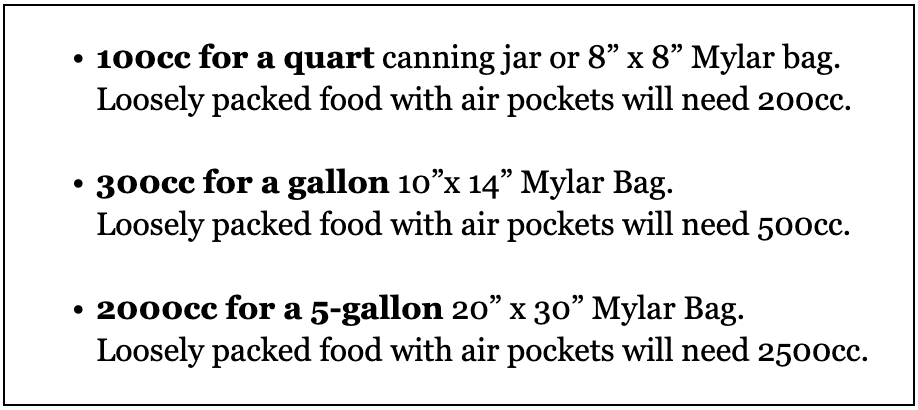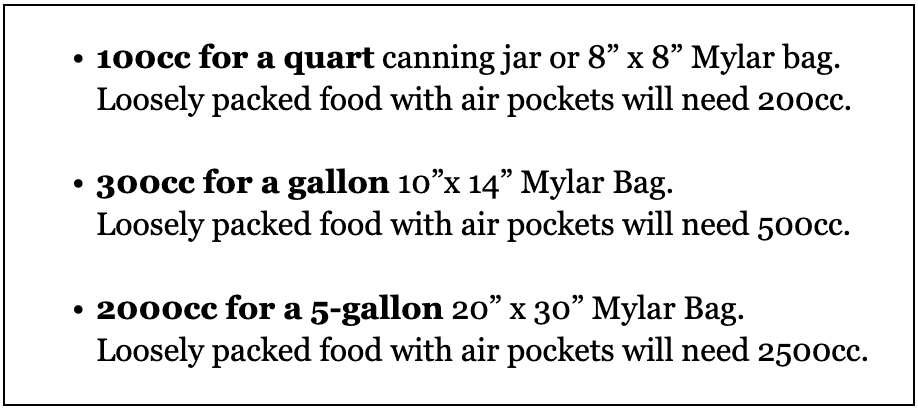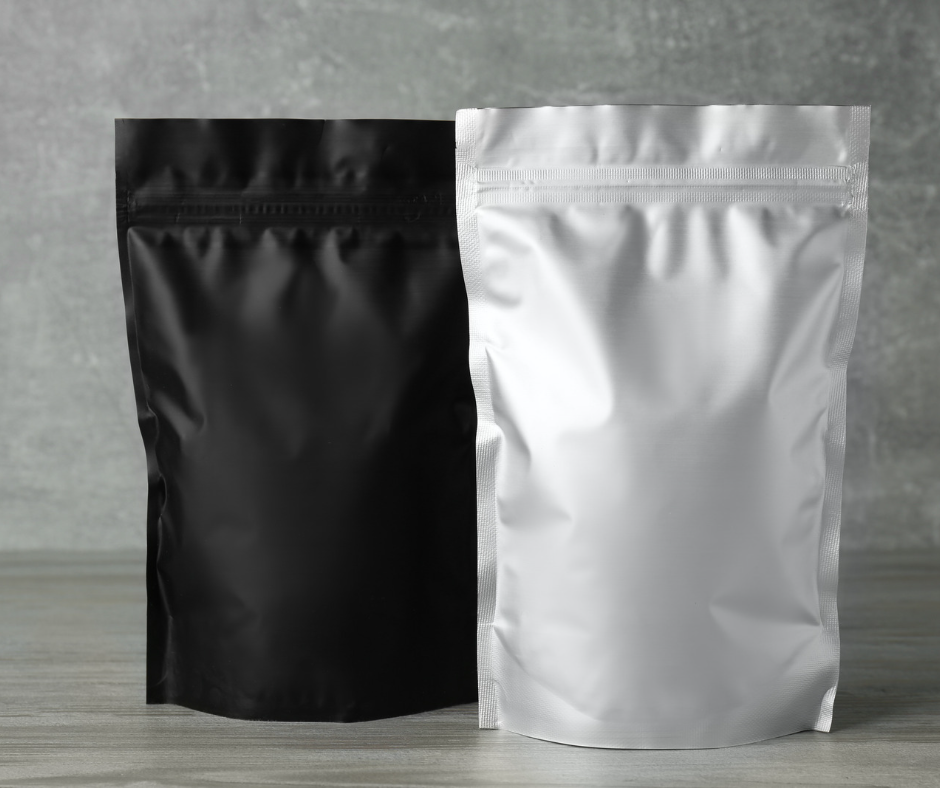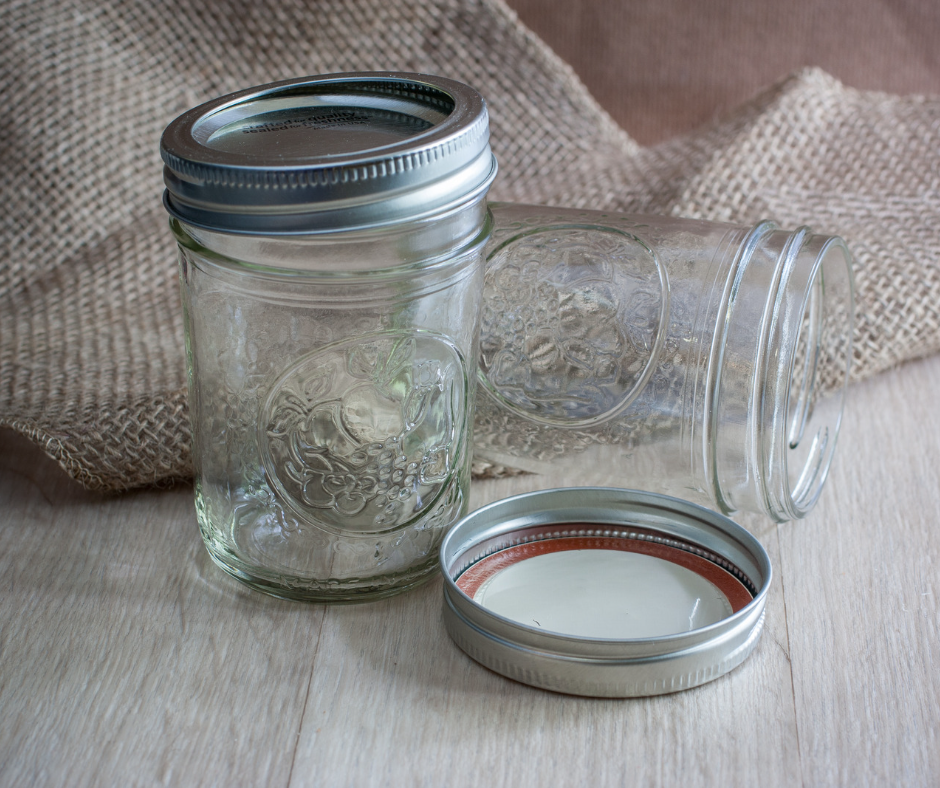Best ways to store your freeze dried foods
Store your freeze dried food
Freeze-drying is a popular method of food preservation that allows you to preserve food without the need for refrigeration or added preservatives. With a freeze dryer, you can create delicious and long-lasting snacks, meals, and ingredients. However, it's important to properly package your freeze-dried foods in order to ensure they stay fresh and retain their quality. In this article, we will explore the different ways to package your freeze-dried food in more detail, as well as discussing some of the key considerations you should keep in mind when selecting the right packaging method for your food.
Using oxygen absorbers (OA)

These are small sachets that contain iron powder and are designed to remove oxygen from a container and replace it with nitrogen. Oxygen absorbers work by exposing the iron powder to oxygen, causing it to rust and absorb the oxygen. Once the iron powder has completely oxidized and all the oxygen in the container is removed, the oxygen absorber will become stiff. Oxygen absorbers can be used in airtight sealed packets or containers and can help keep away pathogens and molds. They can be purchased in various sizes to accommodate the size of the package you are using.
Store your freeze dried food

Mylar

Mylar bags are a cost-effective and easy option for storing freeze-dried food. Made of multiple layers of laminated food-grade plastic with an aluminum coating, they provide excellent protection against moisture, oxygen, and light. It's important to select the right thickness of Mylar bag for your food. Thicker bags, such as 7 mils, are more durable and less likely to puncture, thus help avoiding potential food loss. When selecting a size, it's important to consider the food you are freeze-drying and the portions you want to store.
Once your food is packaged in the Mylar bag, you'll need to seal the bag properly to ensure it's airtight. You can use an impulse sealer or iron to seal the bag, but keep in mind that this method will not remove any oxygen from the bag, so it's essential to place an oxygen absorber into the bag before sealing. It's important to remove as much air as possible from the bag before sealing, for that make sure to use a good impulse sealer and adjust the settings accordingly to the thickness of the bag. For a 7 mil Mylar bag, you will need to set your machine to 7, for a 5 mil bag you can use setting 5. To be extra sure of a secure seal, you can create a second seal just above the tear tabs of the bag before storing it.
In summary, Mylar bags are a cost-effective solution for packaging and storing freeze-dried food. It's important to choose the right thickness of the bag and size of the package, based on the type of food and portions being stored. Additionally, seal the bags properly with an impulse sealer or iron, and place an oxygen absorber inside the bag before sealing to ensure maximum freshness of the freeze-dried food. With these simple steps, you can ensure that your freeze-dried foods remain fresh and delicious for months to come.
Mason Jars

Mason jars are a great option for short-term storage of freeze-dried food. If you are using your freeze-dried food regularly and plan on rotating through your stock, it's best to vacuum seal the jars and keep them in a cool and dark place to maintain the freshness and color of the food. Vacuum sealing is a great way to remove any excess oxygen from the jar, which can extend the shelf life of your food.
When it comes to sealing your jars, you can use the vacuum test function on your freeze dryer. First, remove the shelf unit and close the drain valve. Next, place your jars on the tray and make sure the lids are closed loosely. Then, close the door and select the “Vacuum Test” button. This will activate the vacuum pump, which will seal the jar. After one to two minutes, turn the test off, select done, and slowly open the drain valve. Make sure to do this slowly, as opening it too quickly can cause the jars to break.
You can also use a vacuum sealer like FoodSaver, which was originally designed to vacuum seal FoodSaver bags, which are not suitable for long-term storage of freeze-dried goods. However, the company has developed an attachment for their machine which can be used to vacuum seal jars. Simply remove the band from the jar, place the attachment over the top of the jar and lid and use the machine to vacuum out any remaining oxygen and seal the lid. Once the lid is sealed, you can put the band back on and store your food normally.
It's important to check the seal on each jar before storing it. If the seal isn't complete, repeat the vacuum sealing process. Mason jars sealed with vacuum and kept in the appropriate conditions can be an effective way to store your freeze-dried food for weeks. However, for long-term storage, you may want to consider other options like Mylar bags with oxygen absorbers or vacuum sealed food in jars with oxygen absorbers. It all comes down to your personal preference, the type of food you are storing, and the location where you plan to store your stock.
In conclusion, mason jars can be an effective way to store freeze-dried food in the short-term. Vacuum sealing the jars and adding oxygen absorbers, in addition to proper storage conditions, can help extend the shelf life of your food. For long-term storage, consider using other packaging options like Mylar bags or vacuum sealed jars with oxygen absorbers. With proper packaging and storage, your freeze-dried food will stay fresh and delicious for much longer.
Cans

Cans are a common packaging option for dehydrated and freeze-dried foods because they are durable, easy to transport and stock, and have airtight seals that protect the food from light. However, cans are not resealable and the machinery required to seal them can be costly.
The number 10 on a can refers to its size and not the weight of the contents. The weight of the food inside can vary. These cans usually hold around 12 cups of food. They are made of tinplate, which is a steel material that has a thin film of tin that prevents corrosion and rust.
When it comes to sealing cans, there are two main options - manual and electric sealers. Manual sealers work by using a crank or flywheel to press the lid down and lock it in place, creating an airtight seal. However, sealing multiple cans can be tiring and time-consuming.
On the other hand, electric sealers do the same thing but with less physical effort. They can be more expensive than manual sealers, however, it will save time and energy.
In summary, cans are a good option for packaging dehydrated and freeze-dried foods because they are durable, easy to transport and stock, and have airtight seals. However, the downside is that cans are not resealable and the machinery required to seal them can be costly. There are two main options for sealing cans : manual and electric sealers. Manual sealers use a crank or flywheel to press the lid down and lock it in place, creating an airtight seal. Electric sealers do the same thing but with less physical effort. Both can be effective, but manual sealers can be tiring if sealing multiple cans while electric sealers can be more expensive but will save time and energy. It's important to keep in mind that when using cans, you will also have to purchase a sealer that is specifically made for sealing cans of different sizes. It's important to weigh the pros and cons and consider your needs and budget before choosing which option is the best for your freeze-drying needs.
Resealing
Once you have opened a package of freeze-dried food, its shelf life will be greatly reduced. To prolong the shelf life of your freeze-dried food, it's best to package them in smaller serving sizes or family meal sizes. However, it's also important to reseal the packages between each use.
Mason jars are an excellent option for resealing, as they are easy to open and reseal. They also make it easy to monitor the state of your food. Every time you remove food from a mason jar, you should place an oxygen absorber back in and vacuum seal it closed. This will help remove any oxygen that may have entered the jar during use and prevent any moisture or decay from affecting the food.
It's important to reseal your food as quickly as possible after each use. Once the food has been exposed to the elements, it's important to monitor the state of the food and check for any signs of moisture or decay. With proper resealing, you can expect your food to last anywhere between 6 months to a year, depending on how often you expose them to oxygen and if any moisture has gotten into the packages.
packaging freeze-dried food is an important step to ensure that it stays fresh and retains its quality. There are several options to choose from, including oxygen absorbers, silica gel, and mylar bags. Oxygen absorbers are the most commonly used item in food storage and can help to keep away pathogens and molds. Silica gel is great for high-humidity climates, and mylar bags offer maximum protection against moisture, oxygen, and light. Be sure to follow the manufacturer's instructions for loading the freeze dryer and for operating your specific model. And choose the right type of packaging material depending on your specific needs to get the most out of your freeze-drying.


